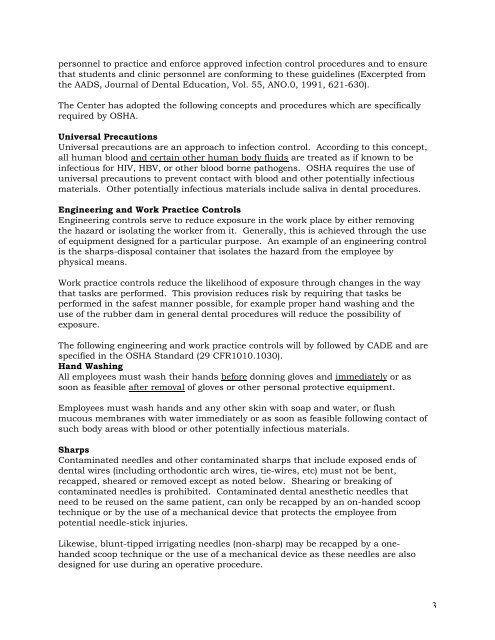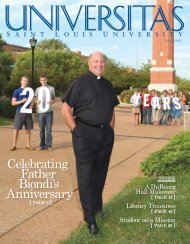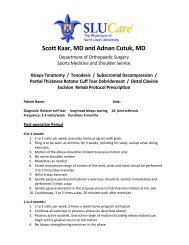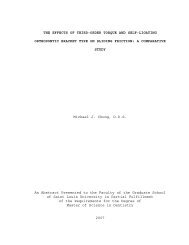Program Manual - Saint Louis University
Program Manual - Saint Louis University
Program Manual - Saint Louis University
You also want an ePaper? Increase the reach of your titles
YUMPU automatically turns print PDFs into web optimized ePapers that Google loves.
personnel to practice and enforce approved infection control procedures and to ensure<br />
that students and clinic personnel are conforming to these guidelines (Excerpted from<br />
the AADS, Journal of Dental Education, Vol. 55, ANO.0, 1991, 621-630).<br />
The Center has adopted the following concepts and procedures which are specifically<br />
required by OSHA.<br />
Universal Precautions<br />
Universal precautions are an approach to infection control. According to this concept,<br />
all human blood and certain other human body fluids are treated as if known to be<br />
infectious for HIV, HBV, or other blood borne pathogens. OSHA requires the use of<br />
universal precautions to prevent contact with blood and other potentially infectious<br />
materials. Other potentially infectious materials include saliva in dental procedures.<br />
Engineering and Work Practice Controls<br />
Engineering controls serve to reduce exposure in the work place by either removing<br />
the hazard or isolating the worker from it. Generally, this is achieved through the use<br />
of equipment designed for a particular purpose. An example of an engineering control<br />
is the sharps-disposal container that isolates the hazard from the employee by<br />
physical means.<br />
Work practice controls reduce the likelihood of exposure through changes in the way<br />
that tasks are performed. This provision reduces risk by requiring that tasks be<br />
performed in the safest manner possible, for example proper hand washing and the<br />
use of the rubber dam in general dental procedures will reduce the possibility of<br />
exposure.<br />
The following engineering and work practice controls will by followed by CADE and are<br />
specified in the OSHA Standard (29 CFR1010.1030).<br />
Hand Washing<br />
All employees must wash their hands before donning gloves and immediately or as<br />
soon as feasible after removal of gloves or other personal protective equipment.<br />
Employees must wash hands and any other skin with soap and water, or flush<br />
mucous membranes with water immediately or as soon as feasible following contact of<br />
such body areas with blood or other potentially infectious materials.<br />
Sharps<br />
Contaminated needles and other contaminated sharps that include exposed ends of<br />
dental wires (including orthodontic arch wires, tie-wires, etc) must not be bent,<br />
recapped, sheared or removed except as noted below. Shearing or breaking of<br />
contaminated needles is prohibited. Contaminated dental anesthetic needles that<br />
need to be reused on the same patient, can only be recapped by an on-handed scoop<br />
technique or by the use of a mechanical device that protects the employee from<br />
potential needle-stick injuries.<br />
Likewise, blunt-tipped irrigating needles (non-sharp) may be recapped by a onehanded<br />
scoop technique or the use of a mechanical device as these needles are also<br />
designed for use during an operative procedure.<br />
3

















